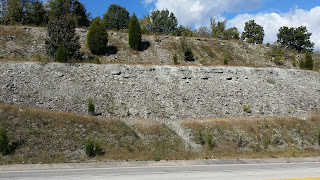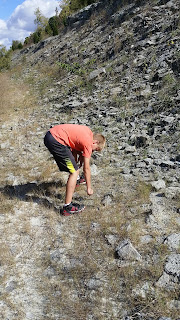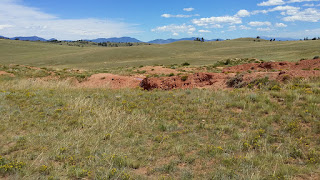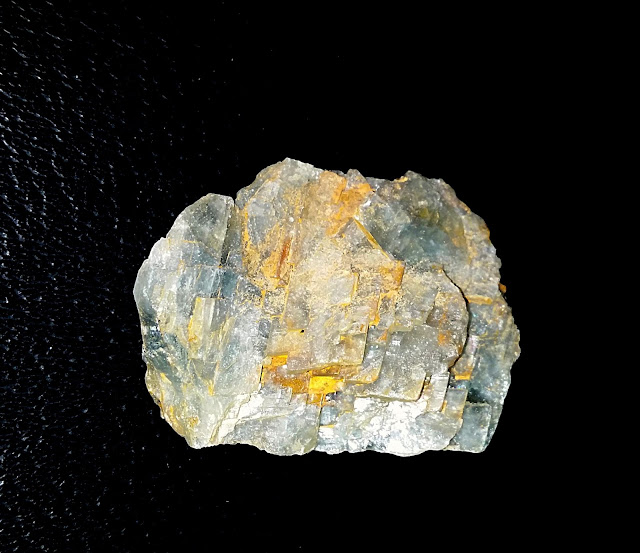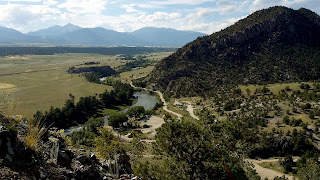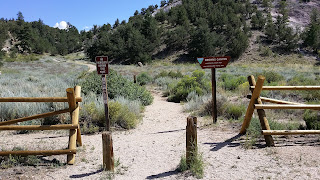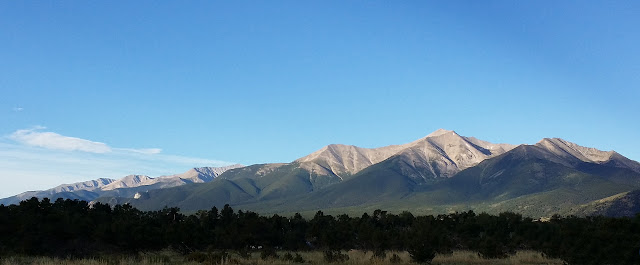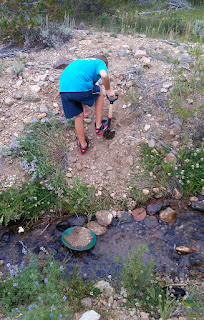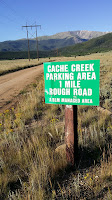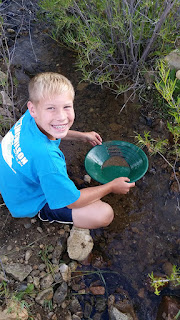 The Alabama air temperature may be acting like early summer in mid-April, but the chilly creek water is still acting more like the late winter. The shallow, gentle flows of the Uphapee (also known as the Chewacla Creek) in northern Macon County was the petrified wood destination for my son, Chase, and I. The sun was high in the sky, the temperature hovered in the mid-70s, and we brought sunscreen and high hopes to this fossil hotspot in the deep South.
The Alabama air temperature may be acting like early summer in mid-April, but the chilly creek water is still acting more like the late winter. The shallow, gentle flows of the Uphapee (also known as the Chewacla Creek) in northern Macon County was the petrified wood destination for my son, Chase, and I. The sun was high in the sky, the temperature hovered in the mid-70s, and we brought sunscreen and high hopes to this fossil hotspot in the deep South.After turning off Interstate 85 and heading north for about 500 yards, we pulled off on the east side of Alabama State Route 81 (just after crossing the bridge) and trudged along the bamboo-infested, sandy banks of the Uphapee. It was a bit of a challenge to find an easy way down to the water, but we forged our way across to the southern bank and then headed east along the sandy, gravel bars.
Our first thirty minutes of scouring the wide assortment of rounded rocks (many of them composed of thin layers that seem like petrified wood) yielded nothing conclusive. We pushed further east for about another 200 yards and I finally landed the largest single piece of petrified wood I have ever found.

The 11-inch chunk was just a dark discoloration submerged about 6-inches deep along the bottom of the creek. I grabbed it and yanked it up, and let out a bit of a shout.
My son, not to be outdone, scoured the shallows only a few feet away and produced his own hand-sized chunk.
After another hour of fruitless searching, which included examining the gray clay layers on either bank, I headed back west about 50 yards and spotted a nice piece jutting up right at the southern edge of a gravel-bar island. The texture and detail of the jagged fragment was stunning.
I would have loved to have hunted on the shores on either side, but the density of the woods and the unmarked stretches of private property quickly squelched that enterprise. Since this trip, I have discovered that many people bring long metal poles and plunge them into the soft silt of the creek bottom. Large pieces of petrified wood are often found buried in the mud. Having collected petrified wood in Arizona and Colorado, I am used to finding large quantities of smaller chunks scattered over a wide area, but it is puzzling to me why we didn't find lots of smaller, rounded pieces on the gravel bars. We spent about three hours total, and I only found one small chunk that might be petrified wood (that wasn't down in the water). The reputation of the area as being rich in petrified wood led me to believe that we would readily find lots of smaller pieces scattered about. That just wasn't the case.

I've heard that there is more wood (and some of it coated with small crystals) to be found on the western bank of the creek leading up to the dam in Wetumpka, but that locale will have to wait for a future trip.
The creek had discolored the exterior of our fossils to a dark brown (almost black) along with a deep green, but we soaked them in a bucket of water mixed with healthy doses of C.L.R. cleaner (readily found at Wal-Mart) and they cleaned up nicely.
Click on this link for a Google Maps marker to this exact hunting spot:
Visit our Rockhounding USA Store. Find that perfect gift for any Rockhound or Prospector in your life!













